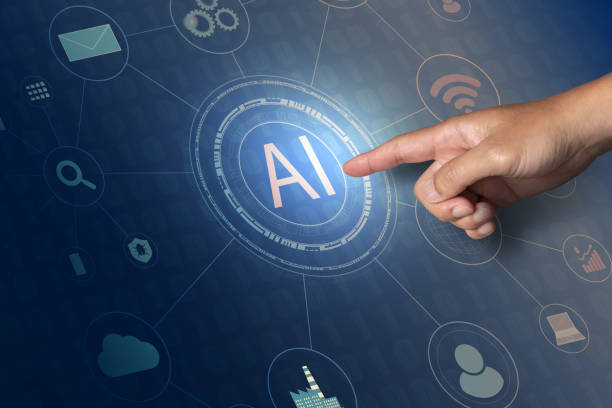What is Artificial Intelligence? Definitions and Foundational Concepts

#Artificial_Intelligence (AI) is a branch of computer science that deals with building machines capable of performing tasks that typically require human intelligence.
These tasks include learning, reasoning, problem-solving, understanding natural language, and pattern recognition.
Simply put, the goal of AI is to build systems that can think and act like humans.
Artificial intelligence is not just one concept, but a collection of techniques and approaches that allow machines to perform complex tasks.
Different definitions have been offered for artificial intelligence, but a comprehensive definition defines artificial intelligence as “the ability of a system to correctly interpret external data, learn from this data, and use it to achieve specific goals through flexible adaptation.”
This adaptability is key to distinguishing #Artificial_Intelligence systems from traditional programmed systems.
Foundational concepts of artificial intelligence include #Machine_Learning (Machine Learning), #Neural_Networks (Neural Networks), #Natural_Language_Processing (Natural Language Processing) and #Computer_Vision (Computer Vision).
Each of these concepts plays an important role in the development and advancement of artificial intelligence.
Artificial intelligence is no longer just a theoretical concept.
This technology has penetrated our daily lives and is used in various fields including medicine, engineering, education and business.
To better understand the application of #Artificial_Intelligence, one can refer to facial recognition systems, intelligent voice assistants and self-driving cars.
All of these systems use #Artificial_Intelligence algorithms to perform their tasks.
Are you tired of losing customers due to poor e-commerce website design? With Rasaweb, solve this problem forever!
✅ Increase sales and visitor-to-customer conversion rate
✅ Smooth and attractive user experience for your customers⚡ Get free consultation
History of Artificial Intelligence – From Dream to Reality

The history of #Artificial_Intelligence dates back to the 1950s, when pioneers of computer science such as Alan Turing and John McCarthy presented initial ideas in this field.
In 1956, the Dartmouth Conference was a milestone in the history of artificial intelligence.
At this conference, McCarthy coined the term “artificial intelligence” and paved the way for extensive research in this field.
The early decades of #Artificial_Intelligence development were accompanied by optimism and high expectations.
Researchers hoped that they could soon build machines that would surpass human intelligence.
But as research progressed, technical and computational limitations became clear, and the era of the “Artificial Intelligence winter” arrived.
During this period, research budgets were reduced and progress in this field slowed down.
In the 1980s and 1990s, with the emergence of new methods such as #Machine_Learning and the increase in computer processing power, #Artificial_Intelligence regained attention.
New algorithms such as artificial neural networks and support vector machines (SVM) were developed and practical applications of #Artificial_Intelligence expanded.
Today, #Artificial_Intelligence has become a pervasive technology.
Recent advances in the fields of #Deep_Learning and #Natural_Language_Processing (NLP) have made it possible to build intelligent systems capable of doing things that were previously considered impossible.
From self-driving cars to intelligent voice assistants, #Artificial_Intelligence is changing our lives.
Types of Artificial Intelligence – From Narrow AI to General AI

#Artificial_Intelligence can be divided into different types based on their capabilities and applications.
One of the most common divisions is the distinction between Narrow AI, General AI, and Super AI.
Narrow AI, also known as Weak AI, is designed to perform specific tasks.
This type of #Artificial_Intelligence performs very well in a specific field, but is not capable of performing tasks outside that field.
Examples of limited #Artificial_Intelligence include facial recognition systems, intelligent voice assistants, and movie recommendation algorithms in streaming services.
General AI, also known as Strong AI, has cognitive abilities similar to humans.
This type of #Artificial_Intelligence is capable of learning, reasoning, problem-solving, and understanding natural language at the human level.
General artificial intelligence is still in the research stages and no complete general #Artificial_Intelligence system has been built to date.
| Type of Artificial Intelligence | Features | Examples |
|---|---|---|
| Narrow AI | Expert at performing a specific task | Facial recognition systems, intelligent voice assistants |
| General AI | Has cognitive abilities similar to humans | Still in research stages |
Super AI is a hypothetical concept that refers to artificial intelligence that surpasses human intelligence.
This type of #Artificial_Intelligence is capable of solving the most complex scientific and technical problems and can dramatically transform human civilization.
However, super artificial intelligence is still a controversial topic and there are concerns about its potential dangers.
Machine Learning – The Beating Heart of Artificial Intelligence

#Machine_Learning is one of the most important branches of #Artificial_Intelligence that allows machines to learn from data without explicit programming.
In fact, instead of writing code for each scenario, #Machine_Learning allows machines to identify patterns and relationships in data and make decisions based on them.
There are different methods for #Machine_Learning, including #Supervised_Learning, #Unsupervised_Learning, and #Reinforcement_Learning.
In Supervised Learning, the machine is trained using labeled data.
This means that each data sample has a label that indicates the correct answer.
The machine tries to learn a model using this data that can predict the correct label for new data.
Examples of supervised learning include spam email detection and stock price prediction.
In Unsupervised Learning, the machine is trained using unlabeled data.
In this case, the machine must automatically identify patterns and structures in the data.
Examples of unsupervised learning include clustering customers based on buying behavior and reducing data dimensions.
In Reinforcement Learning, the machine learns how to optimize a specific goal by interacting with an environment.
At each step, the machine performs an action and improves its strategy based on the feedback it receives.
Examples of reinforcement learning include training robots to walk and play computer games.
#Machine_Learning plays a key role in the development of many #Artificial_Intelligence applications.
From content recommendation systems to self-driving cars, all these systems use #Machine_Learning algorithms to perform their tasks.
Are you worried that your company’s old website will drive away new customers? Rasaweb solves this problem with modern and efficient corporate website design.
✅ Increases your brand credibility.
✅ Helps to attract targeted customers.
⚡ Contact Rasaweb for free consultation!
Neural Networks – Inspired by the Human Brain
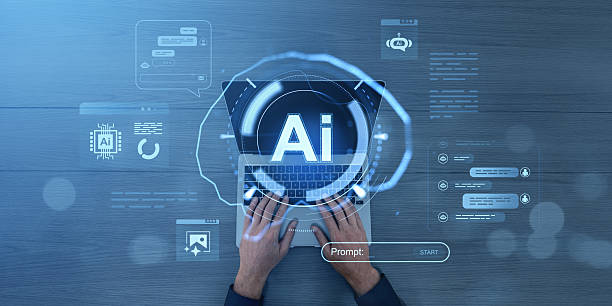
#Neural_Networks are computational models that are inspired by the structure and function of the human brain.
A neural network consists of a large number of nodes called neurons that are organized into different layers.
Each neuron receives inputs from the neurons of the previous layer, processes them, and sends its output to the neurons of the next layer.
#Neural_Networks in #Artificial_Intelligence are used to perform complex tasks such as image recognition, speech recognition, and language translation.
One of the main reasons for the success of #Neural_Networks is their ability to learn complex patterns from large amounts of data.
This process is called #Deep_Learning.
#Deep_Learning allows neural networks to extract more abstract features from data using multiple layers.
For example, in a neural network trained for image recognition, the early layers may recognize simple features such as edges and corners, while the later layers may recognize more complex features such as eyes and nose.
#Neural_Networks are currently used in many fields including #Medicine, #Engineering, #Finance and #Marketing.
From diagnosing various diseases using medical images to predicting customer behavior, #Neural_Networks are a powerful tool for solving complex problems.
Natural Language Processing – Understanding and Generating Human Language

#Natural_Language_Processing (NLP) is a branch of #Artificial_Intelligence that allows machines to understand and generate human language.
The main goal of NLP is to build systems that can communicate with humans in natural language.
NLP includes a set of techniques and algorithms that are used to analyze, interpret, and generate human language.
These techniques include #Parsing, #Semantic_Analysis, #Language_Generation, and #Machine_Translation.
#Parsing is the process in which the grammatical structure of a sentence is analyzed.
#Semantic_Analysis means understanding the meaning of a sentence.
#Language_Generation is the process in which a machine produces a meaningful sentence.
#Machine_Translation is the process in which a machine translates a text from one language to another.
| Concept | Description |
|---|---|
| Parsing | Analysis of the grammatical structure of a sentence |
| Semantic Analysis | Understanding the meaning of a sentence |
| Language Generation | Production of a meaningful sentence by a machine |
| Machine Translation | Translation of a text from one language to another |
NLP is currently used in many fields including #Search_Engines, #Intelligent_Voice_Assistants, #Machine_Translation and #Sentiment_Analysis.
For example, search engines use NLP to better understand users’ queries and provide relevant results.
Intelligent voice assistants such as Siri and Alexa use NLP to understand users’ voice commands and respond to them.
Recent advances in the fields of #Deep_Learning and #Natural_Language_Processing have made it possible to build powerful NLP systems that are capable of doing things that were previously considered impossible.
For example, large language models like GPT-3 can produce long and coherent texts that are difficult to distinguish from texts produced by humans.
Computer Vision – Seeing and Understanding Images
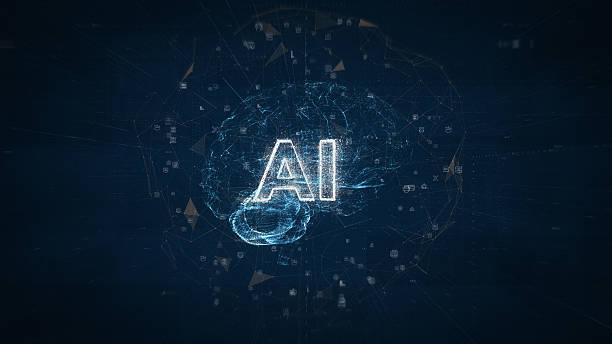
#Computer_Vision is a branch of #Artificial_Intelligence that allows machines to see and understand images and videos.
The main goal of computer vision is to build systems that can extract useful information from visual data.
Computer vision includes a set of techniques and algorithms that are used for #Object_Detection, #Face_Recognition, #Image_Segmentation, and #3D_Reconstruction.
#Object_Detection is the process in which different objects are identified and located in an image.
#Face_Recognition is the process in which the faces of people are identified in an image.
#Image_Segmentation is the process in which an image is divided into different parts and each part is assigned to a specific category.
#3D_Reconstruction is the process in which a 3D model of a scene is created from two-dimensional images.
Computer vision is currently used in many fields including #Self_Driving_Cars, #Medicine, #Video_Surveillance, and #Robotics.
For example, self-driving cars use computer vision to detect traffic signs, other vehicles, and pedestrians.
Doctors use computer vision to diagnose various diseases using medical images.
Recent advances in the fields of #Deep_Learning and #Computer_Vision have made it possible to build powerful computer vision systems that are capable of doing things that were previously considered impossible.
For example, image recognition systems can identify objects with very high accuracy, even in poor lighting conditions or in the presence of obstacles.
Applications of Artificial Intelligence in Various Industries
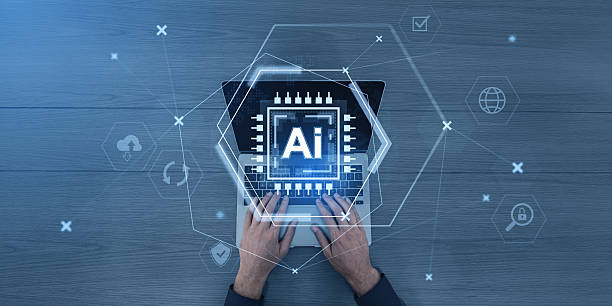
#Artificial_Intelligence is transforming various industries and offers innovative applications.
From #Medicine and #Engineering to #Finance and #Education, #Artificial_Intelligence helps companies increase their efficiency, reduce costs, and make better decisions.
In Medicine, #Artificial_Intelligence is used to diagnose diseases, develop new drugs, personalize treatment, and improve patient care.
For example, #Artificial_Intelligence systems can analyze medical images and identify abnormalities that may not be detected by humans.
In Engineering, #Artificial_Intelligence is used to design new products, optimize production processes, and predict equipment failure.
For example, #Artificial_Intelligence algorithms can predict the imminent failure of equipment by analyzing sensor data and prevent production downtime.
In Finance, #Artificial_Intelligence is used to detect fraud, manage risk, provide financial advice, and improve customer experience.
For example, #Artificial_Intelligence systems can identify suspicious activities by analyzing transaction patterns and prevent financial fraud.
In Education, #Artificial_Intelligence is used to personalize education, provide feedback to students, and evaluate their performance.
For example, #Artificial_Intelligence systems can tailor educational content to have the greatest impact by analyzing students’ strengths and weaknesses.
In addition to these industries, #Artificial_Intelligence has extensive applications in other fields such as #Transportation, #Agriculture, #Energy, and #Customer_Service.
It is predicted that with the advancement of technology, #Artificial_Intelligence will play a more important role in our lives and completely transform various industries.
Are you tired of losing customers due to poor e-commerce website design? With Rasaweb, solve this problem forever!
✅ Increase sales and visitor-to-customer conversion rate
✅ Smooth and attractive user experience for your customers⚡ Get free consultation
Challenges and Concerns Related to Artificial Intelligence
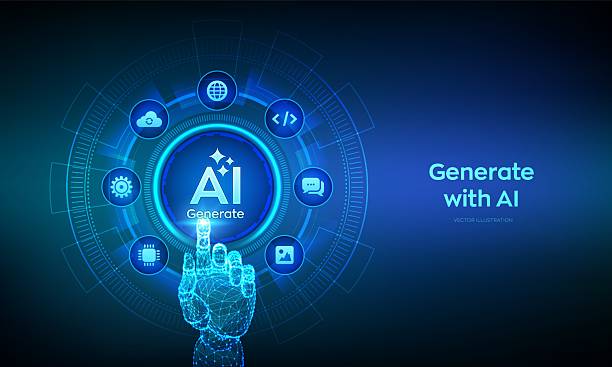
While #Artificial_Intelligence has great potential to improve our lives, there are also significant challenges and concerns associated with the development and use of this technology.
One of the main concerns is the #Ethical_Issues related to #Artificial_Intelligence.
The decisions that #Artificial_Intelligence systems make can have profound impacts on people’s lives, and it is important that these decisions are fair, transparent, and responsible.
Another concern is the #Impact_of_Artificial_Intelligence_on_the_Labor_Market.
With the automation of many tasks, many jobs may be lost and many people will become unemployed.
To address this challenge, people need to learn new skills and adapt to the new conditions of the labor market.
#Privacy is another important concern about #Artificial_Intelligence.
#Artificial_Intelligence systems need a lot of data to function, and collecting and using this data can violate people’s privacy.
To protect people’s privacy, strict laws and regulations need to be developed regarding the collection and use of data.
#Security is also an important concern about #Artificial_Intelligence.
#Artificial_Intelligence systems can be subject to cyber attacks and be misused.
For example, a hacker could hack an #Artificial_Intelligence system and use it to spread misinformation or carry out cyber attacks.
To address this threat, #Artificial_Intelligence systems need to be carefully designed and protected.
In addition to these concerns, there are other issues about #Artificial_Intelligence that need to be addressed.
These issues include #Accountability, #Transparency, and #Controllability of #Artificial_Intelligence systems.
The Future of Artificial Intelligence – Outlook and Predictions
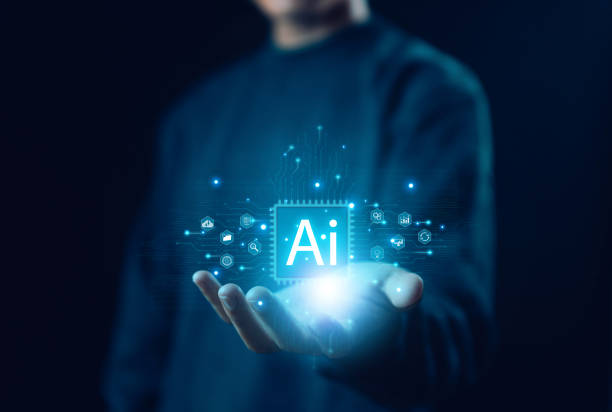
The future of #Artificial_Intelligence looks very bright and exciting.
With the advancement of technology, it is expected that #Artificial_Intelligence will play a more important role in our lives and completely transform various industries.
In the near future, we will see the expansion of #Artificial_Intelligence applications in fields such as #Medicine, #Engineering, #Transportation, and #Education.
One of the most important advances in the field of #Artificial_Intelligence is the development of #General_Artificial_Intelligence (AGI).
Although AGI is still in the research stages, achieving it could have enormous consequences for humanity.
AGI can solve complex problems that are currently beyond the capabilities of limited #Artificial_Intelligence.
#Robotics is another area that is expected to merge with #Artificial_Intelligence in the future.
Robots equipped with #Artificial_Intelligence can perform dangerous and repetitive tasks and help humans live more comfortably.
For example, surgical robots can perform complex surgeries with greater precision, and rescue robots can search for survivors in damaged areas.
However, it is important to remember that the development of #Artificial_Intelligence also comes with challenges and risks.
We need to develop this technology carefully and responsibly and prevent the creation of negative consequences.
Creating appropriate laws and regulations, public education, and promoting ethics in #Artificial_Intelligence are among the measures that can help us manage the challenges and exploit the opportunities of #Artificial_Intelligence.
Frequently Asked Questions
| Question | Answer |
|---|---|
| What is artificial intelligence? | It is a simulation of human intelligence in machines programmed to think like humans and imitate their actions. |
| What are the main branches of artificial intelligence? | They include machine learning, deep learning, natural language processing, computer vision, and robotics. |
| What is Machine Learning? | It is a branch of artificial intelligence that focuses on enabling systems to learn from data and identify patterns without explicit programming. |
| Mention examples of artificial intelligence applications in our daily lives. | Voice assistants (such as Siri and Alexa), recommendation systems in Netflix and Amazon, self-driving cars, and facial recognition programs. |
| What is Deep Learning? | It is a subset of machine learning that uses multi-layered (deep) artificial neural networks to process large amounts of data. |
| What is Natural Language Processing (NLP)? | It is a branch of artificial intelligence that focuses on enabling computers to understand, interpret and generate human language. |
| What are some of the ethical concerns related to artificial intelligence? | They include bias in data, privacy, job loss, and liability in the event of errors. |
| What are the main benefits of artificial intelligence? | Increased efficiency, improved decision-making, automation of repetitive tasks, and discovery of complex patterns in data. |
| How is artificial intelligence used in the field of healthcare? | In diagnosing diseases, discovering drugs, analyzing medical images, and personalized patient care. |
| How do you see the future of artificial intelligence? | It is expected to continue to evolve at a rapid pace, affecting all aspects of human life, from industry to education and entertainment. |
And other Rasaweb advertising agency services in the field of advertising
Intelligent social media: A combination of creativity and technology for digital branding through precise audience targeting.
Intelligent customer journey map: An exclusive service for growing customer acquisition based on SEO-centric content strategy.
Intelligent advertising campaign: Professional optimization to increase website visits using user experience customization.
Intelligent digital advertising: Transform sales growth with user experience customization.
Intelligent direct marketing: Designed for businesses looking to grow online through attractive user interface design.
And more than hundreds of other services in the field of internet advertising, advertising consulting and organizational solutions
Internet advertising | Advertising strategy | Advertisement report
Resources
What is Artificial Intelligence? All about artificial intelligence and its applications
,Machine Learning Training and Implementation in Python – Elementary
,In which fields is artificial intelligence used?
,Applications of Artificial Intelligence (+ Introducing New and Growing Applications)
? For your business, a brighter future awaits with Rasaweb’s professional services. From SEO-optimized website design to digital marketing strategies, we are with you every step of the way to have a strong presence in the online world.
📍 Tehran, Mirdamad Street, next to the Central Bank, South Kazerun Alley, Ramin Alley, No. 6



